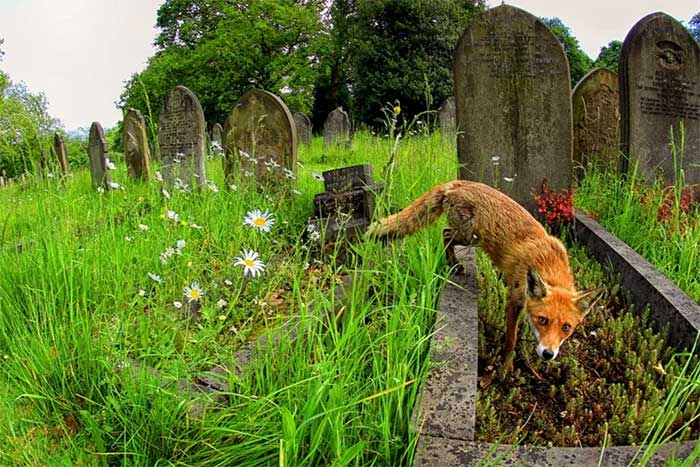Death may be the first thing that comes to mind when thinking of a cemetery. However, in reality, the opposite is occurring in many large cemeteries around the world.
A recent study has found that these human-free places, filled with green grass and tranquility, can provide valuable habitats for wildlife in urban areas.

Cemeteries provide habitats for various wildlife species, helping them escape the threats of urban areas. (Photo: Getty).
Cemeteries can even become attractions for non-native species, turning into a “wildlife sanctuary” in the truest sense.
Explaining this phenomenon, scientists have identified that the main threats to flora and fauna in urban areas are the decline of grasslands, intensified land management through mowing and logging. Additionally, the introduction of invasive species also plays a significant role.
However, cemeteries help flora and wildlife evade these threats.
Taking the Wilmersdorf and Buschkrugallee cemeteries in Berlin, Germany, as examples, scientists noted that these places have long been famous for their high biodiversity, from plants to wildlife, and are regarded as a “mini sanctuary.”
For plants, grasslands, mushrooms, wildflowers, etc., grow more abundantly since they are less frequently mowed, and the number of mature trees that are not cut down is significantly higher compared to surrounding suburban or urban areas.
The sound of birds singing, the peaceful atmosphere, and the minimal impact from human activities also provide crucial habitats for many threatened species in urban areas, such as foxes, snails, squirrels, bats, and birds…
In fact, enjoying nature and high biodiversity is one of the main factors that attract tourists as well as locals living nearby to visit cemeteries.
Researchers were surprised to find that in a survey conducted with 796 residents in Berlin, as many as 57% of the respondents indicated that they visit cemeteries to enjoy nature, exceeding the percentage of those who actually visit cemeteries for the purpose of remembering the deceased (54%).
These individuals rated four characteristics they found most impressive in cemeteries, including tranquility, relaxation, a sense of solitude, and rich nature.
Additionally, many people reported that their common activities when visiting cemeteries included walking (48%) and relaxing (46%).
In light of these statistics, researchers suggest that authorities should seriously consider practical strategies for developing cemeteries into shared living environments for both humans and nature, beyond their purely burial significance.




















































